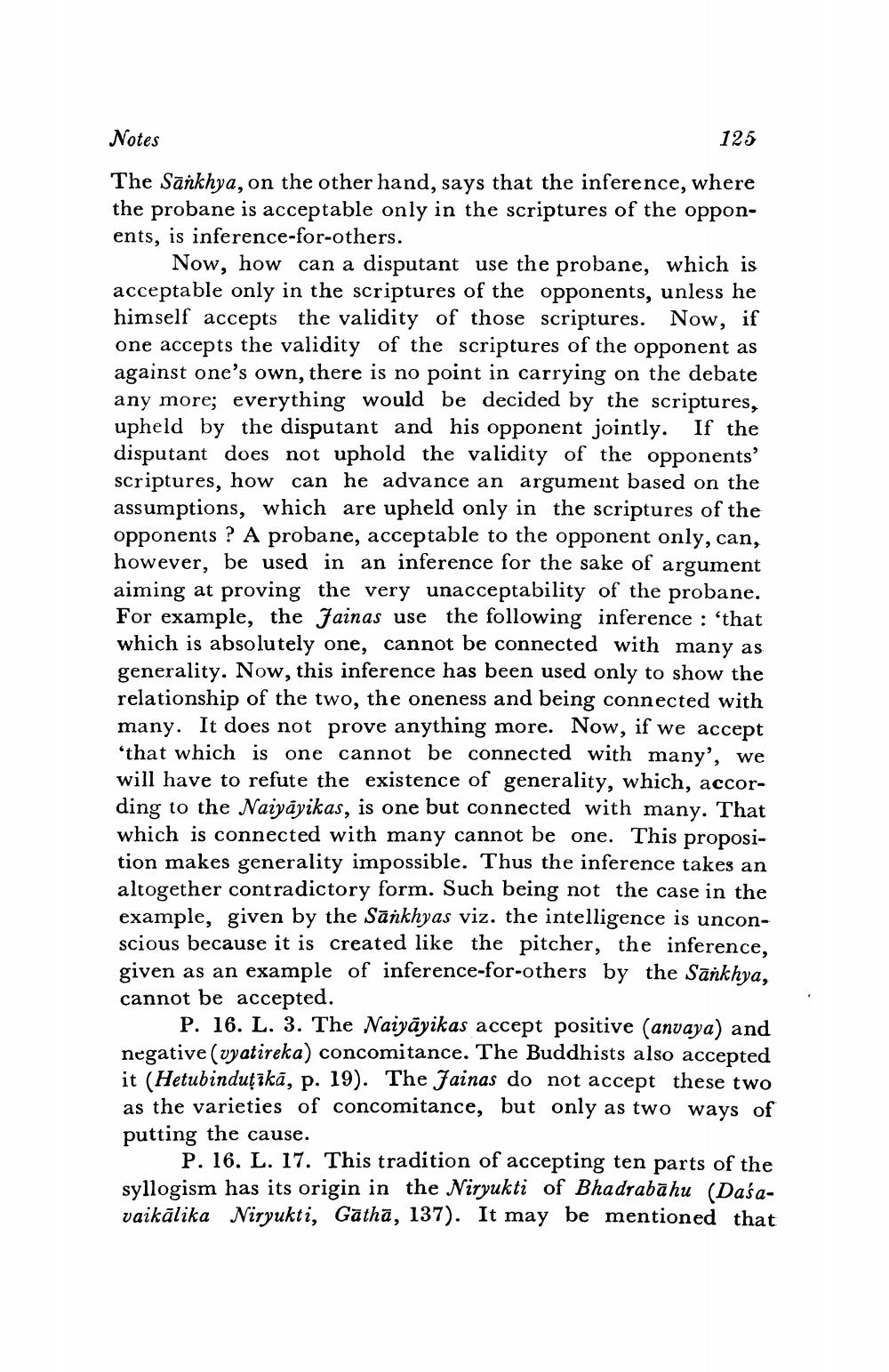________________
Notes
125 The Sānkhya, on the other hand, says that the inference, where the probane is acceptable only in the scriptures of the opponents, is inference-for-others.
Now, how can a disputant use the probane, which is acceptable only in the scriptures of the opponents, unless he himself accepts the validity of those scriptures. Now, if one accepts the validity of the scriptures of the opponent as against one's own, there is no point in carrying on the debate any more; everything would be decided by the scriptures, upheld by the disputant and his opponent jointly. If the disputant does not uphold the validity of the opponents' scriptures, how can he advance an argument based on the assumptions, which are upheld only in the scriptures of the opponents ? A probane, acceptable to the opponent only, can, however, be used in an inference for the sake of argument aiming at proving the very unacceptability of the probane. For example, the Jainas use the following inference : ‘that which is absolutely one, cannot be connected with many as generality. Now, this inference has been used only to show the relationship of the two, the oneness and being connected with many. It does not prove anything more. Now, if we accept 'that which is one cannot be connected with many', we will have to refute the existence of generality, which, according to the Naiyāyikas, is one but connected with many. That which is connected with many cannot be one. This proposition makes generality impossible. Thus the inference takes an altogether contradictory form. Such being not the case in the example, given by the Sankhyas viz. the intelligence is unconscious because it is created like the pitcher, the inference, given as an example of inference-for-others by the Sankhya, cannot be accepted.
P. 16. L. 3. The Naiyāyikas accept positive (anvaya) and negative (vyatireka) concomitance. The Buddhists also accepted it (Hetubinduțīkā, p. 19). The Jainas do not accept these two as the varieties of concomitance, but only as two ways of putting the cause.
P. 16. L. 17. This tradition of accepting ten parts of the syllogism has its origin in the Niryukti of Bhadrabāhu (Daśavaikālika Niryukti, Gathā, 137). It may be mentioned that




